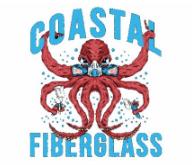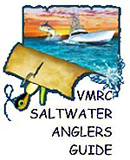
Paige II Charters
By TH Spangler | Connie Barbour (Long Bay Pointe Bait and Tackle)
Flounder catches are on the rise! They’re being boated along the Chesapeake Bay Bridge-Tunnel and on rough bottom in the Bay. Many of the larger fish are being taken around near-shore wrecks and artificial reefs. Rudee and Lynnhaven inlets are also holding flounder, along with speckled trout and puppy drum. Captain Craig Paige, Paige II charters enjoyed impressive flounder catches last week.
Cobia are being found throughout the lower Bay. Both sight-casters and angler anchoring and chumming are catching, some fish have topped 70 pounds. Remember the 2018 Virginia recreational cobia regulations. A 40-inch, total length, minimum size limit; 1-fish daily possession limit or 3-fish-daily vessel limit, whichever is more restrictive; only one fish per vessel per day may be greater than 50 inches in total length; the season runs through September 30. All anglers, captains, and guides fishing for cobia must obtain a Recreational Cobia Permit from the Commission and report all harvest and cobia fishing activity. Permits can be obtained online here ,
Red drum remain plentiful on the shoals at the mouth of the bay. Occasionally anglers have encountered large schools on the surface.
Sheepshead are hanging around the pilling of the CBBT now. Small crabs are your best bait. Long Bay Pointe Bait and Tackle usually has them in the live tank.
Spadefish remain plentiful. Look for them around buoys, pilings and over wrecks. The Chesapeake Light tower is a favorite spot but some of the larger fish are being found in the Bay, at the Cell near Cape Charles.
Boats trolling the oceanfront off Sandbridge are catching limits of Spanish mackerel. Anglers working coastal wrecks are catching lots of triggerfish.
Croaker are available throughout the lower bay now. Virginia piers are reporting croaker, sea mullet, pompano, spadefish, flounder and a few spanish mackerel and cobia.
The Eastern Shore shallows are holding some tarpon. Catching a tarpon in Virginia waters is special.
The offshore fleet has been finding good numbers of white marlin and a few blue marlin and sailfish. Mahi-mahi numbers are good but our tuna bite is almost non extant.
Deep-droppers are enjoying excellent catches of golden and blueline tilefish, along with sea bass.
Look for amberjack around the south tower.




























 Views Last 7 days : 1678
Views Last 7 days : 1678 Views Last 30 days : 7012
Views Last 30 days : 7012